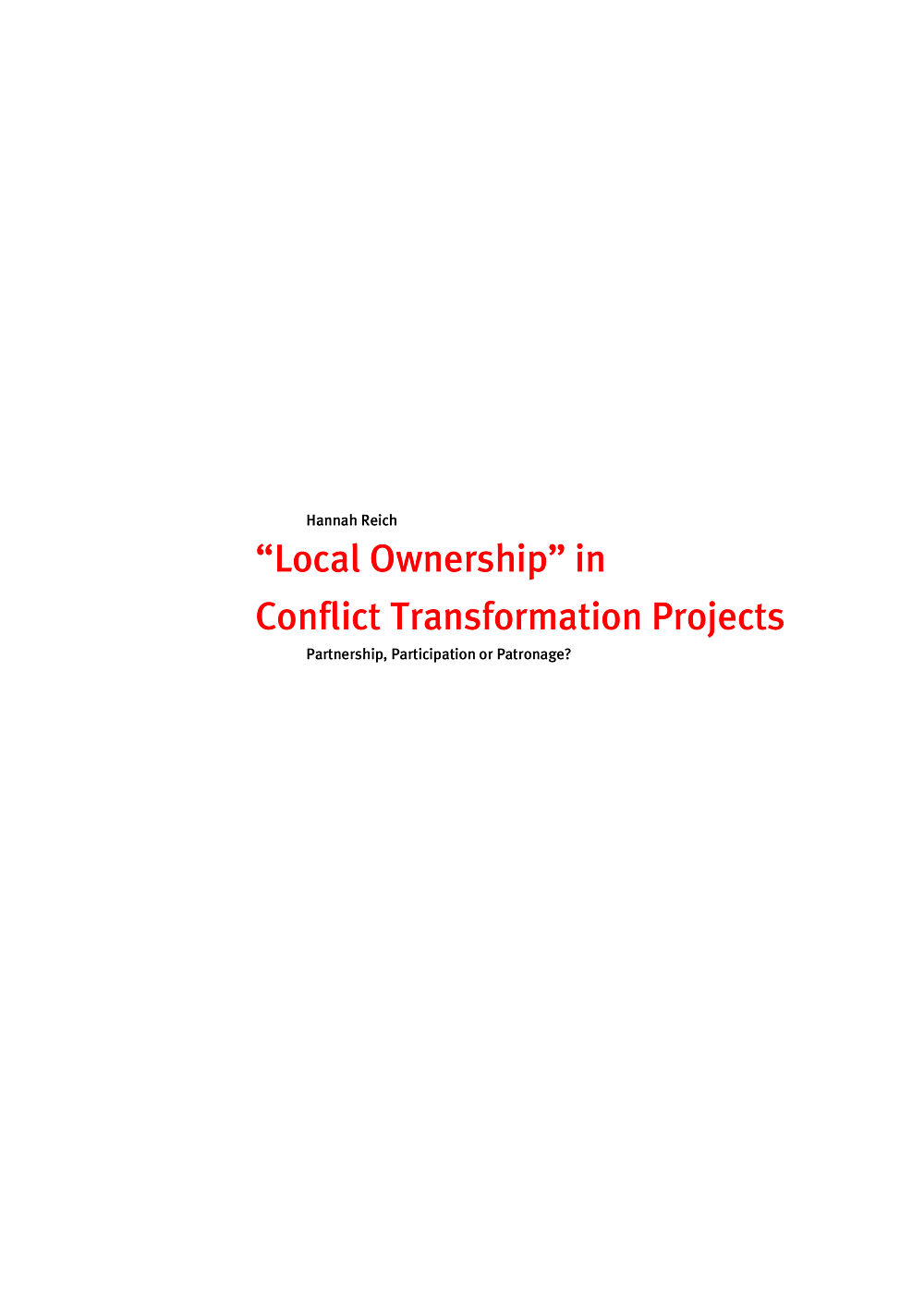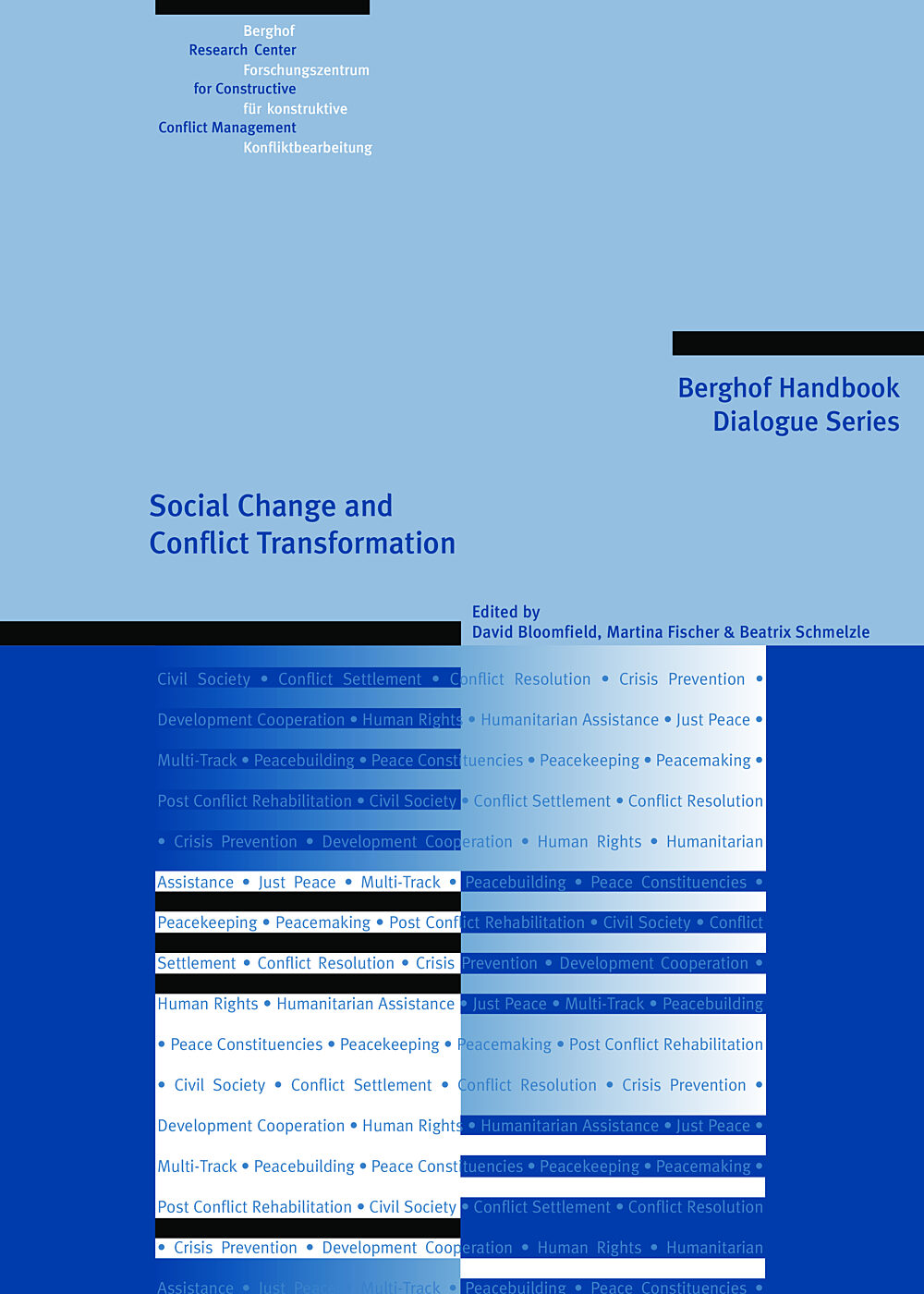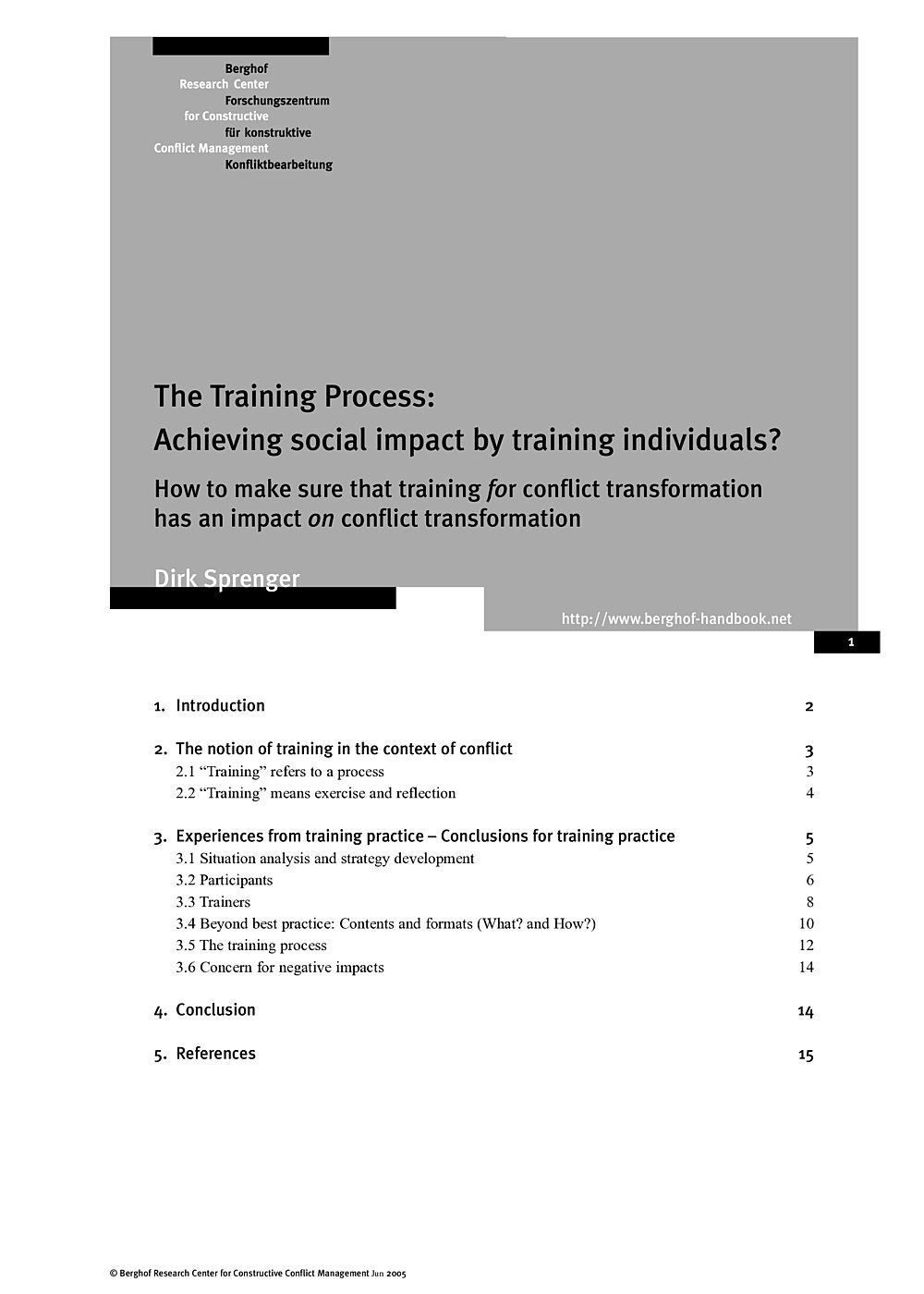Our Library
Explore our publications, from research papers and series to educational materials, covering all aspects of conflict transformation and peace promotion.

"Local Ownership" in Conflict Transformation ProjectsPartnership, Participation or Patronage?
The article argues that the demand for local ownership in externally funded conflict transformation projects is counterproductive, if it is seen as a concrete project objective. Nevertheless, the demand has an important function as policy ideal, pointing to the necessity for change in present international cooperation. Instead of aiming towards the impossible goal of literal “local ownership” of a foreign-funded project, which by definition inscribes the roles of donor and beneficiary, the focus should be on the nature of the relationship between the donors and the beneficiaries. It is within this relationship that power is or is not shared and that the equality of the partners may or may not be realised. The concept of "learning sites" can be used as a framework to counter asymmetrical relationships and develop a more equal partnership between “insiders” and “outsiders” in international peacebuilding work.
- Year2006
- Author(s)Hannah Reich

Trilingual Glossary of Terms for Conflict Transformation in Sri Lankaලංකාවේ ගැටුම් විපරිවර්තනය ත්රෛභාෂා පාරිභාෂික ශබ්ද කෝෂය / இலங்கையில் மோதுகை மாற்றுநிலையாக்கத்திற்கான அருஞ்சொற்பதங்கள்
Trilingual Glossary of terms for Conflict Transformation in Sri Lanka
ලංකාවේ ගැටුම් විපරිවර්තනය ත්රෛභාෂා පාරිභාෂික ශබ්ද කෝෂය
இலங்கையில் மோதுகை மாற்றுநிலையாக்கத்திற்கான அருஞ்சொற்பதங்கள்
- Year2006

Social Change and Conflict TransformationHandbook Dialogue Series No. 5 - complete
In his lead article, Christopher Mitchell, Professor Emeritus of George Mason University’s Institute for Conflict Analysis and Resolution (ICAR), sets out a framework for thinking systematically about the relationship between conflict and (social) change. He considers necessary changes to bring about the resolution of conflict, as well as obstacles to such changes, and envisions possible roles for agents of change. Five authors have expanded on, and critically reviewed, this lead article: Ed Garcia (International Alert), Chris Spies (UNDP Guyana), Ilana Shapiro (University of Massachusetts), Vivienne Jabri (King's College London) and Daniela Körppen (Berghof Peace Support).
- Year2006

The Training Process: Achieving Social Impact by Training Individuals?Handbook Article
- Year2005
- Author(s)Dirk Sprenger

The Role of Local Business in PeacebuildingHandbook Article
- Year2005
- Author(s)Nick Killick, VS Sriantha, Canan Gunduz

New Trends in PCIAHandbook Dialogue Series No. 4 - complete
Questions of effectiveness, impact and evaluation continue to be most relevant for the field of peacebuilding and conflict transformation: Adam Barbolet, Rachel Goldwyn, Hesta Groenewald & Andrew Sherriff report with intimate knowledge on the development of "conflict sensitivity" as an alternative to PCIA; Kenneth Bush sends thought-provoking "field notes", reflecting on his learning in the context of applying PCIA in the South; Thania Paffenholz presents a comprehensive overview of the "Aid for Peace Approach". Short reflection papers by all authors shed light on progress and controversy regarding the new trends in peace and conflict impact assessment.
- Year2005

Transforming War Economies: Dilemmas and StrategiesHandbook Dialogue Series No. 3 - complete
This Dialogue sets out to assess the usefulness of current analytic approaches and policy recommendations in dealing constructively with war economies. Starting off with an overview of the state of the debate by Karen Ballentine and Heiko Nitzschke, respondents from a broad variety of backgrounds add their reflections, strategies and critique.
- Year2005

Youth in War-To-Peace TransitionsApproaches of International Organizations (Report Nr. 10 )
This study deals with youth in war-to-peace transitions and the response of international organizations to them. While youth’s relevance for societal transformation is a long-acknowledged fact, their large numbers and potential roles in conflict have recently caused organizations to consider them a target group for peace and development programs. Reflecting on this process, this study thus assesses the difficulties in conceptualizing the role of youth in peace-building processes on the one hand and the concrete efforts of international organizations to integrate them into their policies and programs on the other. For this purpose, it explores four guiding questions: First, what approaches have international organizations developed regarding youth? Second, on which assumptions about youth and their role in violent conflicts are they based? Third, how do the different approaches affect program development, and, fourth, are they are compatible?
- Year2005
- Author(s)Yvonne Kemper

Preface to the 2004 print edition of the Berghof HandbookHandbook Article
Preface to the 2004 print edition of the Berghof Handbook, "Transforming Ethnopolitical Conflict".
- Year2004
- Author(s)Martina Fischer, Norbert Ropers

Culture, Power Asymmetries and Gender in Conflict TransformationHandbook Article
Highlights conflict transformation approaches as necessarily having to deal with the closely linked categories of power asymmetries, gender inequality and cultural difference. The author argues that an overarching, global culture of domination exists. The emancipation of marginalised groups stimulates, and results from, the fundamental culture shift which conflict transformation implies. (revised for 2004 print edition).
- Year2004
- Author(s)Diana Francis